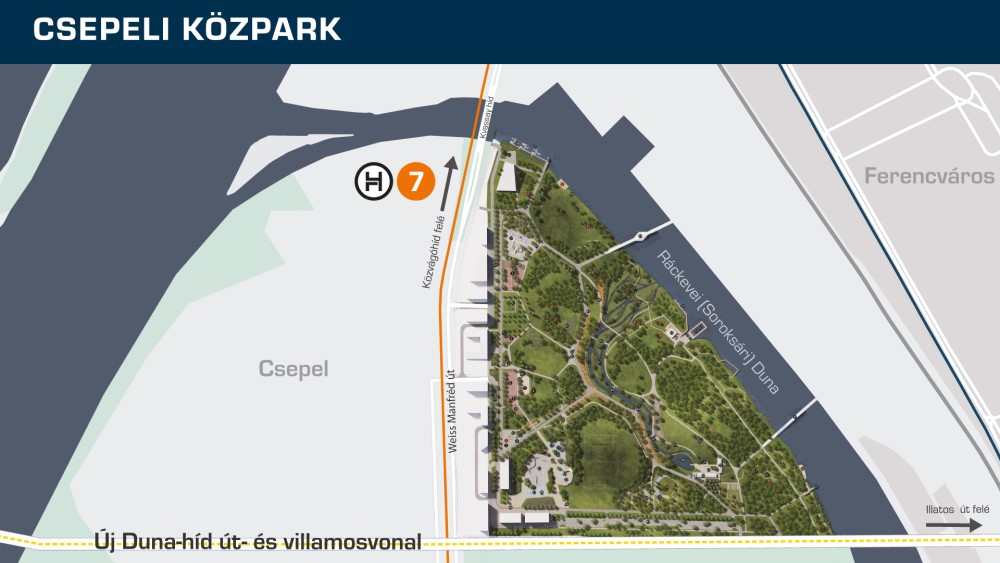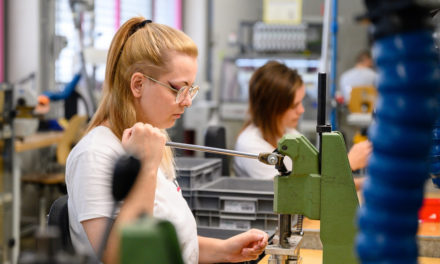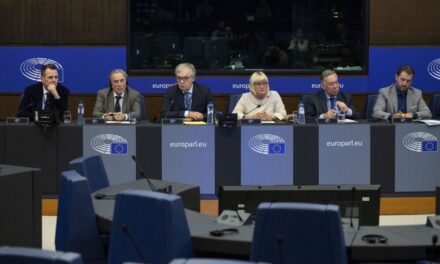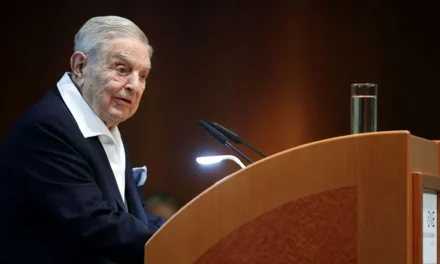Fifty years ago, no public park as large as the Csepeli public park was built in the capital. For now, consensus surrounds the project. There is an intention, a plan and money to make Budapest giga-green.
Left-liberals once dreamed of skyscrapers and apartment parks, but nothing came of the Csepel Manhattan Plan . Just like the Olympic facilities also planned for the north-eastern part of the island peak.
Now, however, there are concrete concept plans for a long-seen investment in Budapest: the Csepeli public park , which - using the expression of Szilárd Németh, member of parliament and state secretary - will not be a "l'art pour l'art" green space. According to the politician, the development could cost around HUF 30 billion (not including the price of the plots to be bought back).
But what is the project for which a conference was recently organized , and the representatives of the cabinet (among others Balázs Fürjes , Secretary of State responsible for the development of Budapest and the capital agglomeration; Domonkos Schneller ; Dávid Vitézy , Budapest Development Center [BFK] CEO) were the people of the district ( Lénárd Borbély ) and the capital ( Zoltán Erő , Sándor Bardóczi ) also represented?
The new government investment
Csepel public park would be a thirty-six hectare continuous green area,
which is three times larger than Városmajor, among the parks in Budapest, it can only be surpassed by the one hundred and two hectare City Park or the one hundred and ten hectare Néplig. A new public park of this size has not been built in the capital for fifty years, thanks to which: 300,000 square meters of park space, 50,000 square meters of sports area and 90,000 square meters of eco-park with close to nature would be created, and 1,000 new trees would be planted.

Source: BKF / Facebook
The project is very timely: the north-eastern part of Csepel Island has been an underutilized area for decades. A polluted industrial site in a disorderly state, spontaneously colonized by invasive species, whose transformation into a public park would provide the city residents with the opportunity for active rest and recreation; it would improve the urban microclimate and expand ecological diversity.
In a related Facebook post, Dávid Vitézy wrote the Csepeli public park "fits in organically" with the surrounding ecological, educational, leisure and transport development projects. The CEO of BFK referred to the construction of the pedestrian-bicycle axis to be created from Duna Arena to Csepe; to establish a 10-hectare Ferencváros sports and leisure park around the athletic center; for the development of H7 heat; for the sprawling Galvani Bridge project; and for the revitalization development of the Ráckevei-Soroksári-Danube for the preservation of its natural values.
Behind the new public park, a political consensus emerged between the governing parties and the left-wing city administration. Szilárd Németh, among others, alluded to this when he said: "If there is no cooperation, it certainly has no fruit. Fruit can be grown and then picked and eaten well if we work together in the garden. We don't have to agree on everything. In fact. We can even scan each other in the pub, measure each other. But when we want to create, we need some harmony." Similarly, Balázs Fürjes, who believes that this project can only be carried out successfully in a team and with cooperation.
Meanwhile, Gergely Karácsony...
Since 2019, it is always worth taking a detour when it comes to green developments in Budapest. New city management, new green creed :
"There is less and less green in Budapest. The increasing threat of climate change is not enough, we continue to hear about more tree fellings - read Gergely Karácsony 's municipal election program. Budapest needs an immediate turnaround:
we must protect and develop our existing green spaces, as well as create new ones throughout the city.
The establishment of new, large-scale public parks and the greening of densely built-up neighborhoods from corner to corner with one tree at a time are both important."
Although the past two years have not been easy for the left-wing city management, due to, among other things, the handling of the health and economic effects of the coronavirus epidemic, the capital budget does not have as many reserves as the central budget.
The large two-year green performance can still be said to be small:
Dezső Radó Plan – green development concept; Sustainable Energy and Climate Action Plan; Budapest Capital Environmental Protection Program; Fatár application; Sky-high grass tender; bee pastures (22 locations); as well as the Garden (for example, the introduction of watering bags, glyphosate-free weeding, the Stockholm Tree Planting System and debris management).
Substantial progress in the direction of urban greening in the capital is practically only made with the creation of the eight-hectare Pünkösdfürdő Park and the cleaning of the Tétényi plateau. And where the planning application for the City Hall Park and the repositioning of the Mocsáros vineyard can lead to is highly questionable - mainly due to the audio recordings leaked in the wake of the City Hall case , as well as the changing habits of land sales in the capital .
is trying to make political capital out of the government's attack, despite the lack of tree planting he promised For example, due to the extension of the Buda tramway. However, it is usually omitted from his posts that the following parks were renovated and completed in Budapest with the financing of the cabinet:
Margitsziget (2017, 78,000 square meters of renewed green space, 296 new trees)
Normafa (2018, 18,000 square meters of renewed green space, 203 new trees),
Orczy park (2018, 172,000 square meters of new or renewed green space, 789 new trees)
Museum Garden (2019, 11,000 square meters of renewed green space, 25 new trees)
MOME park (2019, 15,000 square meters of renewed green space, 158 new trees)
Millenáris Széllkapu (2020, 26,000 square meters of brand new green space, 355 new trees)
City Park (up to 2021, 150,000 square meters of renewed green space, 500 new trees)
Parks of Puskás Arena (2021, 55,000 square meters of renewed green space, 452 new trees)
Featured image: MTI/Árpád Földházi













